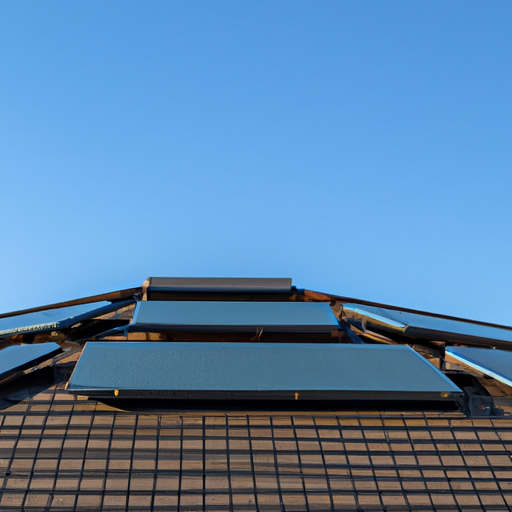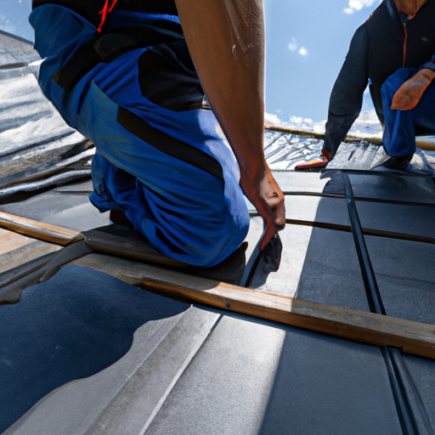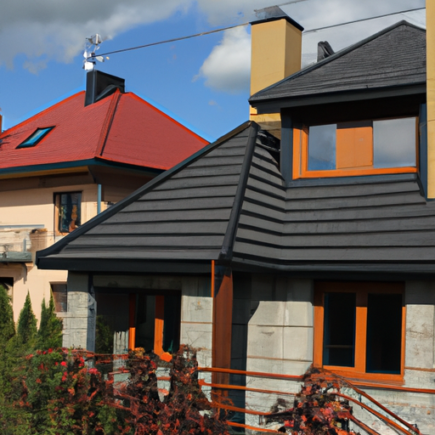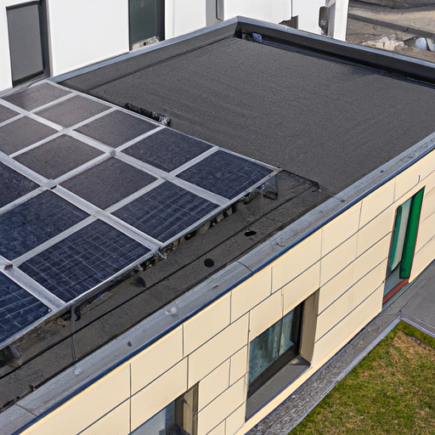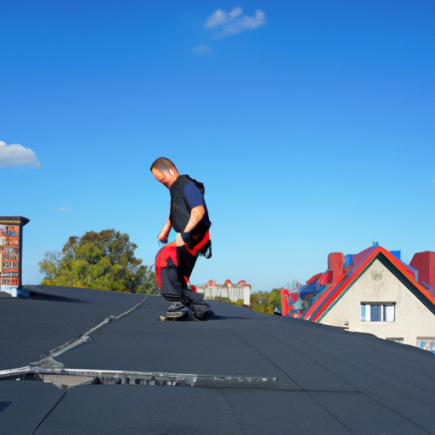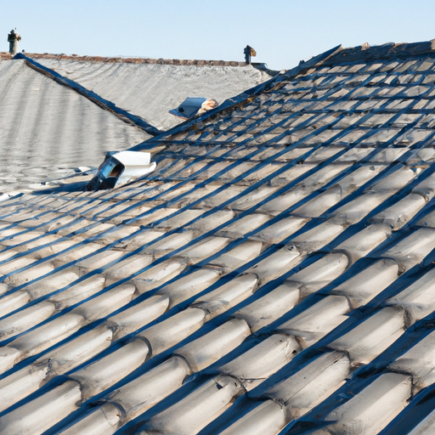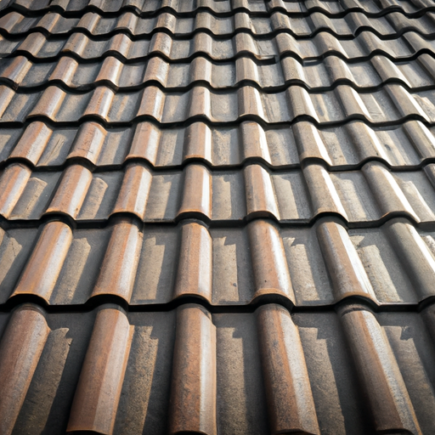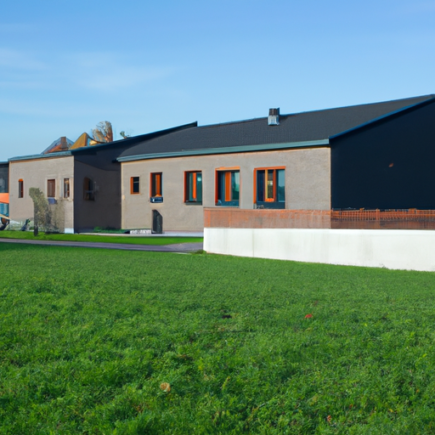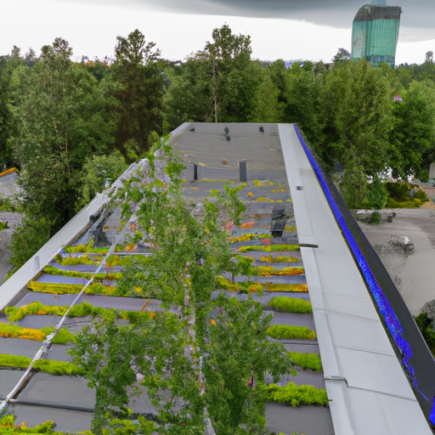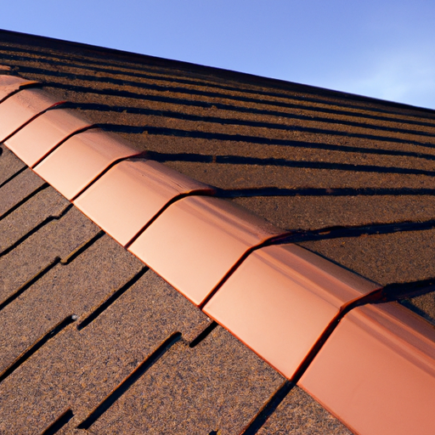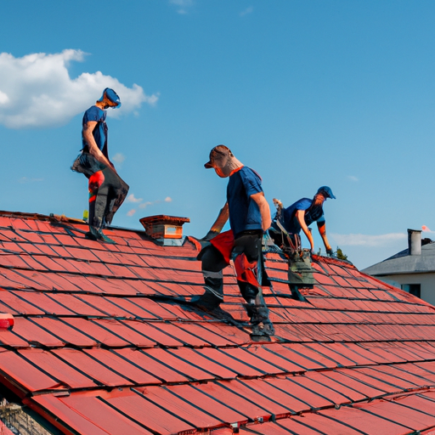In this comprehensive guide, we explore the top materials for flat roofing and their benefits. Built-up roofing (BUR) is a traditional option that offers excellent protection and durability at a lower installation cost. EPDM roofing is a synthetic rubber material known for its durability and flexibility, making it suitable for complex roof designs. TPO roofing is a single-ply membrane that provides durability, energy efficiency, and superior strength with heat-welded seams. Modified bitumen roofing offers excellent waterproofing properties and tear resistance, making it ideal for high-traffic areas. PVC roofing is highly durable and resistant to weather conditions, chemicals, and UV rays, but it tends to be more expensive. Overall, choosing the right material for your flat roof is essential and should be done based on your specific needs and budget with the guidance of a professional roofing contractor.
Flat Roof vs. Sloped Roof: Which is the Better Option?
slope. One of the main advantages of a flat roof is its cost-effectiveness. They are generally more affordable to install and require less maintenance compared to sloped roofs. Additionally, flat roofs provide more usable space, as they can be turned into rooftop gardens or outdoor living areas. However, it is important to be aware of the potential for water pooling, which can lead to leaks and structural issues if not properly addressed. Flat roofs may also require more frequent inspections and maintenance to prevent water-related problems. On the other hand, sloped roofs offer superior drainage, longer lifespan, and durability. They minimize the risk of water buildup and leakage due to the slope, and they are less prone to water-related issues. However, sloped roofs tend to be more expensive to install and maintain, and they limit the usable space under the roof. Ultimately, the right choice between a flat roof and a sloped roof will depend on your specific needs, budget, and preferences. It is essential to carefully consider all the pros and cons before making a decision.
Energy Efficiency and Flat Roofing: What You Should Consider
when aiming to optimize energy efficiency in flat roofing installation:
1. Insulation: Proper insulation is crucial for reducing heat transfer and maintaining comfortable indoor temperatures. It is important to choose the right insulation material based on climate, building codes, and budget.
2. Roofing material: Opting for light-colored or reflective roofing materials can greatly enhance energy efficiency by reflecting sunlight and reducing heat absorption. Materials like TPO or PVC with high solar reflectance and thermal emittance ratings are popular choices.
3. Ventilation: Good ventilation helps regulate temperature and moisture levels, preventing heat buildup and condensation. A well-designed ventilation system can reduce strain on HVAC systems and lower energy costs.
4. Maintenance and regular inspections: Regular maintenance and inspections are essential for ensuring the long-term energy efficiency of flat roofs. Promptly addressing any leaks or damage helps maintain insulation integrity and overall performance. Regular cleaning and debris removal prevent clogs and blockages.
By taking these factors into consideration and collaborating with experienced architects and engineers in energy-efficient design, maximizing energy-saving potential, and reducing energy consumption and utility costs can be achieved with flat roofing systems.
5 Essential Tips for Maintaining a Flat Roof
signs of cracking, peeling, or deterioration. These areas are prone to water infiltration and should be repaired or replaced as necessary to maintain the integrity of the flat roof.
5. Maintain Roof Coating: If your flat roof has a coating, such as asphalt or elastomeric, regularly inspect it for any signs of damage or wear. Repair or recoat any areas that show signs of cracking, blistering, or peeling. This will ensure that the roof remains waterproof and protected from UV damage.
By implementing these preventative measures, you can protect your flat roof from potential issues and extend its lifespan. Regular inspections and maintenance are key to avoiding costly repairs and ensuring the longevity of your flat roof.
Commercial Roofing Maintenance 101: Essential Tips for Long-Term Success
shingles, at least twice a year and after severe weather events. Clear Debris: Regularly clear any debris such as leaves, branches, or dirt that may accumulate on the roof to prevent drainage issues and potential damage. Clean Gutters and Drains: Clogged gutters and drains can lead to water pooling on the roof, causing leaks and structural damage. Regularly clean and maintain gutters and drains to ensure proper water drainage. Trim Surrounding Trees: Overhanging branches can scrape or damage the roof during storms or strong winds. Trim any overgrown branches to prevent them from causing harm to the roof. By following these essential tips, businesses can ensure the longevity and efficiency of their commercial roofing, protecting their investment and creating a safe environment for all.
Commercial Roofing Trends: What’s New in the Industry
Commercial roofing is undergoing a transformation as emerging technologies disrupt the industry. Sustainable and eco-friendly materials are becoming increasingly popular, with green roofing solutions such as vegetative and solar roofs offering energy efficiency and cost savings. Advanced coatings and membranes are also gaining traction, providing improved durability and weather resistance. Digital tools and software are streamlining processes and improving project management, while smart technology, such as IoT sensors, is being used for proactive maintenance and cost reduction. Staying updated with these trends is crucial for professionals in the commercial roofing industry to enhance efficiency and sustainability.
The Importance of Commercial Roofing: Protecting Your Business Investment
businesses are at risk of leaks, structural damage, and compromised safety. Therefore, it is essential to consider key factors when making a commercial roofing investment. These factors include the quality and durability of the materials used, the expertise and reputation of the roofing contractor, the specific needs and requirements of the business, and the long-term maintenance and repair plans. By carefully considering these factors, businesses can ensure that their commercial roofing investment is effective in protecting their property and supporting their overall business performance. Additionally, a well-maintained and high-quality commercial roof can also contribute to energy efficiency, aesthetic appeal, and cost savings in the long run. Therefore, it is crucial for businesses to thoroughly assess and prioritize these factors before making a commercial roofing investment.
The Advantages of Green Commercial Roofing: Sustainable Solutions for Businesses
commercial roofs act as natural air filters, absorbing pollutants and releasing oxygen. This can create a healthier and more pleasant environment for employees and visitors. Another benefit of green commercial roofing is its ability to manage stormwater. These roofs can absorb and retain rainwater, reducing the strain on drainage systems and minimizing the risk of flooding. Additionally, green roofs can extend the lifespan of the roof itself, acting as a protective layer against harsh elements and reducing maintenance and replacement costs. Overall, green commercial roofing offers a range of environmental, financial, and aesthetic advantages for businesses, making it a sustainable and beneficial choice.
Choosing the Right Materials for Commercial Roofing: A Comprehensive Guide
Roofing materials play a crucial role in the longevity and functionality of commercial buildings. This comprehensive guide explores different types of roofing materials suitable for commercial buildings, including single-ply membrane roofing, metal roofing, built-up roofing (BUR), modified bitumen roofing, and green roofing. Each type has its advantages and considerations, such as energy efficiency, durability, and aesthetic appeal. Making the right choice requires careful consideration of factors like budget, maintenance requirements, and consulting with a professional roofing contractor. By selecting the appropriate roofing material, you can ensure the longevity and functionality of your commercial building’s roof while meeting your specific needs.
The Role of Commercial Roofing Contractors: Finding Trustworthy Professionals
When it comes to maintaining and repairing commercial roofs, hiring reliable commercial roofing contractors is of utmost importance. These professionals not only install and fix roofs, but they also play a crucial role in ensuring the safety, longevity, and durability of commercial buildings. Finding trustworthy contractors can be daunting, but it is essential as the quality of workmanship and materials used can significantly impact the overall condition of the roof and the structural integrity of the building. Their key roles include assessing the needs of the property through thorough inspections, providing expert advice and guidance, using the necessary tools and equipment efficiently and safely, and offering guarantees and warranties. Ultimately, reliable commercial roofing contractors contribute to the overall well-being and safety of commercial properties and protect investments for years to come.


